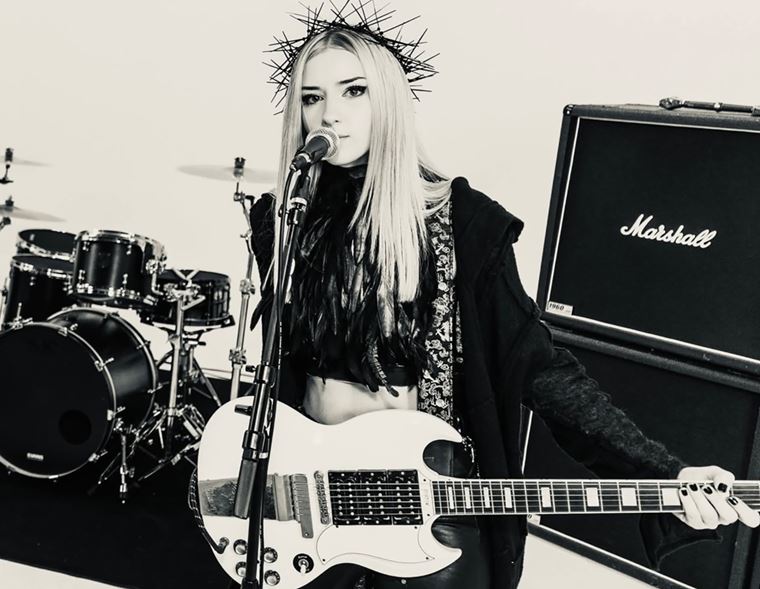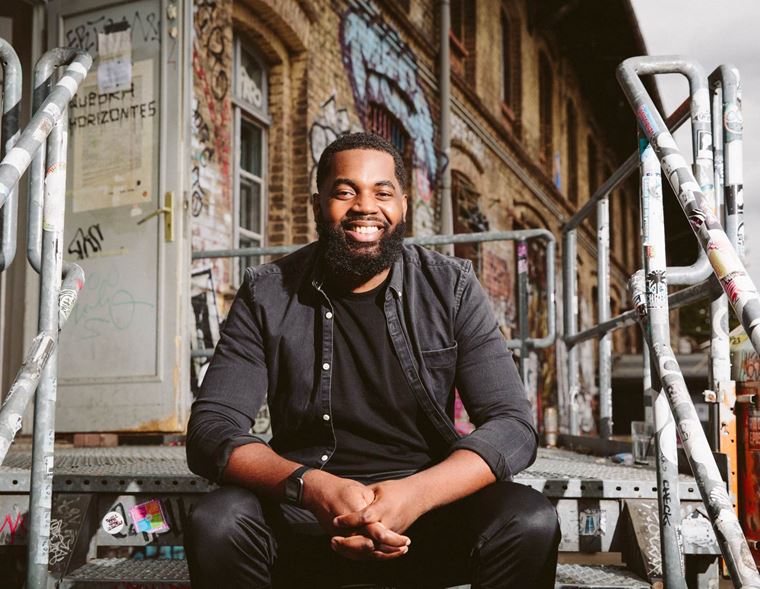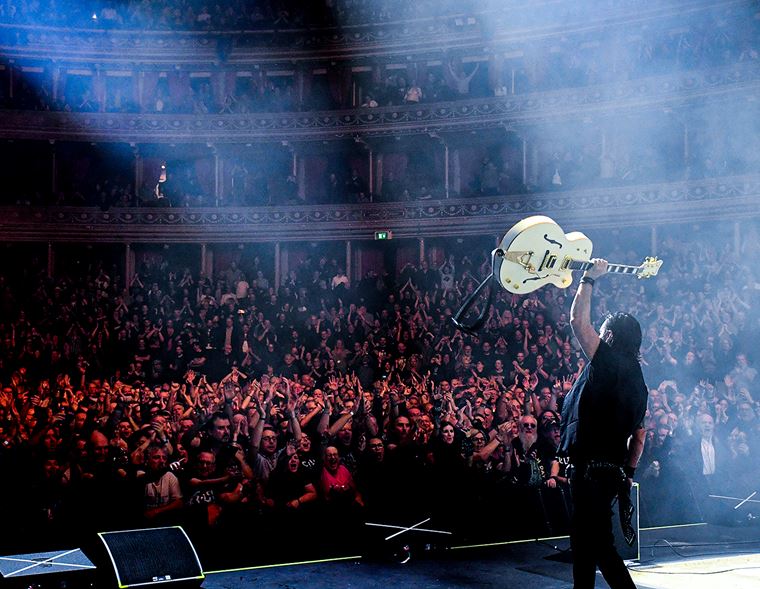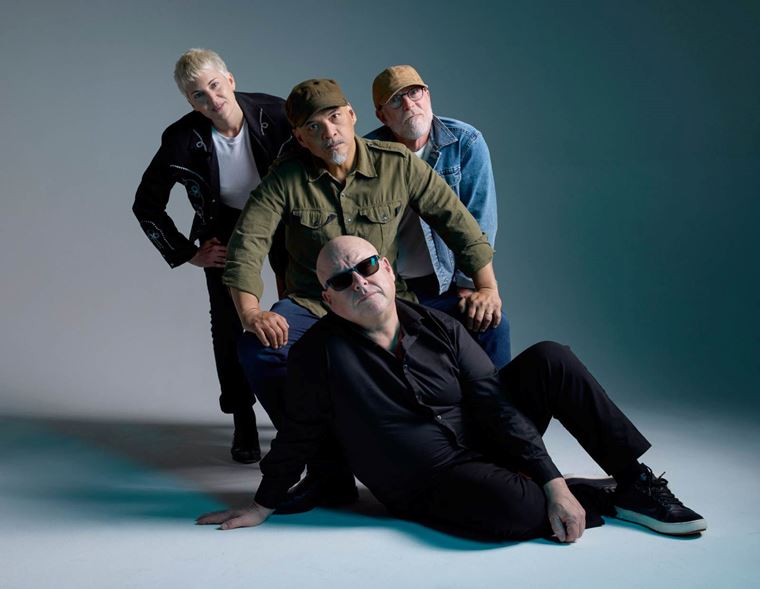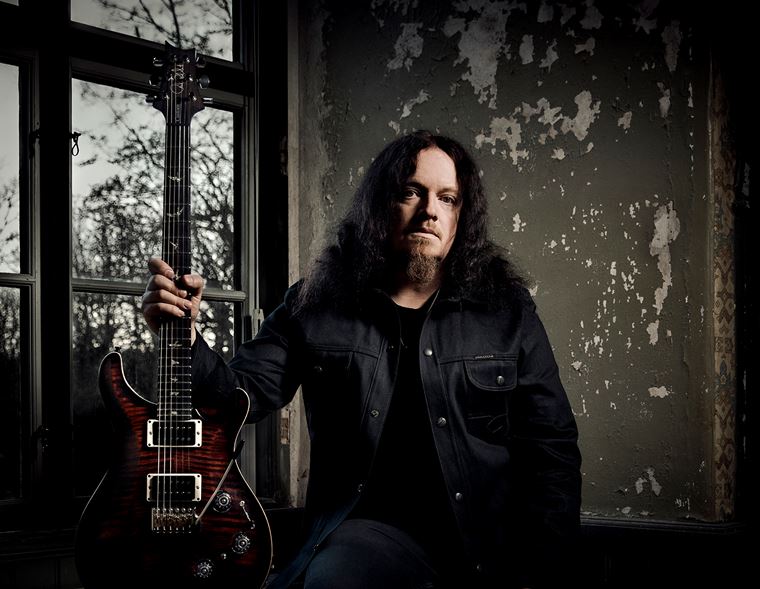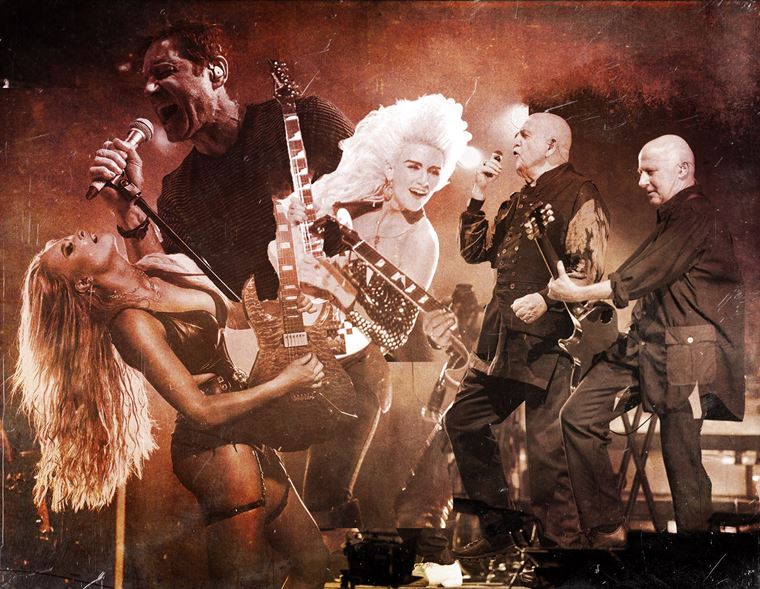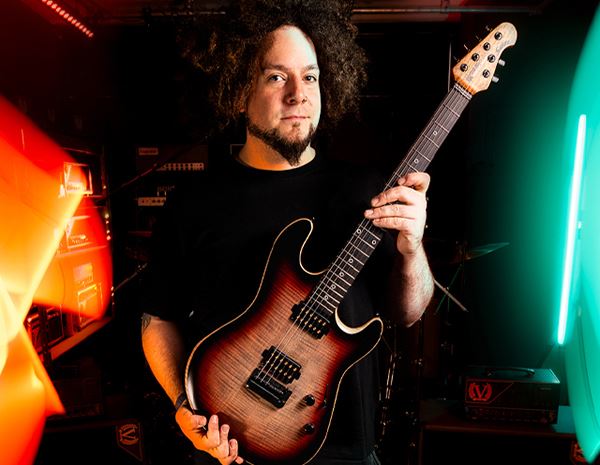Radical Romanticism: STEVE HACKETT Talks Classical Guitars!
Published on 29 January 2021
How has lockdown been going for you?
Are you at that stage where you’re dreaming of a lovely, care-free foreign holiday? Visiting the ancient sites and reclining on vast, Aegean beaches? Do exotic lands sound more tempting – and far off – than ever before?
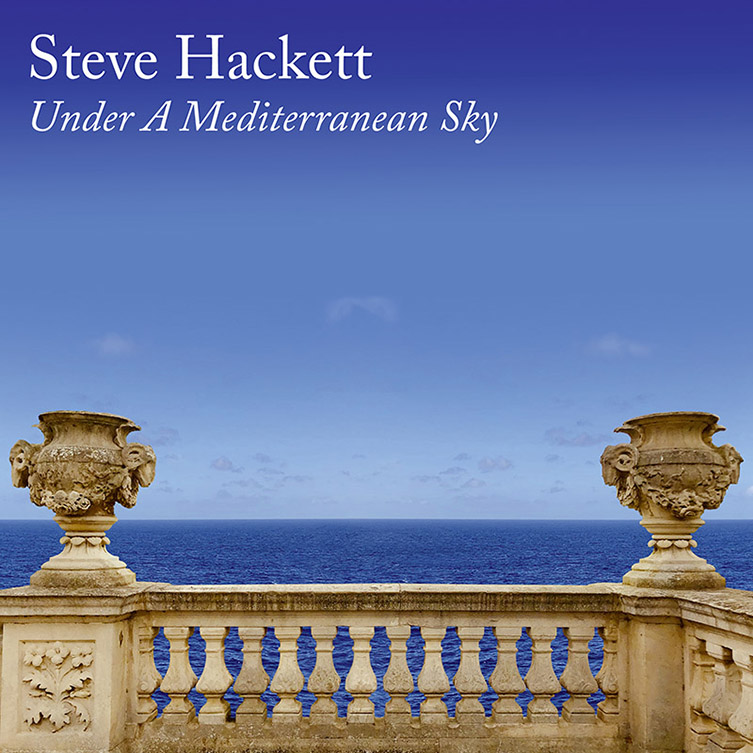
If so (and we really don’t blame you since we are quite the same), then Steve Hackett has created something rather special, just for you... something that can transport you far from the grey compromises of your lockdown life. Under a Mediterranean Sky is the ex-Genesis guitar master’s newest record, and it is assigned and designed to be a romantic, dramatic, colourful, whirlwind trip through the majesty and mystery of the Med.
Front and centre is Steve’s virtuosic classical guitar compositions, backed by a dramatic string orchestra that sounds, by turns, like Lawrence of Arabia and a candlelit dinner by the sea! It’s a mesmerising collection of instrumentals, displaying depth, melody and some quite jaw-dropping playing. Truly, his guitar leaps from the speakers, offering a wide array of emotions and energies, all played with passions and almost super-human ability.
These songs have been informed by Steve’s own journeys through various Mediterranean countries. Egypt, Spain, Greece, Malta, France, Jordan and Italy all get a look in here, interpreted as original music (only one piece, Scarlatti Sonata, is a cover) that is singular in its goal to whisk you away to a more peaceful, idyllic place.
We’ve had the pleasure of speaking to Steve before, but never so specifically about classical guitar. He’s an exceptional exponent of the instrument, and has much to share in terms of tunings, right hand technique, fingernail care and much more! Steve brightened up our frosty, snow-covered Monday morning with tales from the Mediterranean, and about his view on ‘Radical Romanticism’...
Guitarguitar: Steve, thank you for agreeing to talk to me about your new record! I’m excited to chat to you about it.
Steve Hackett: Thank you! I’m excited about it! Yes, the record was ready several months ago and I’ve been listening to it a lot. I love the way it sounds, the way it was recorded and the orchestral input from Roger King, which I think is stunning, basically. I’m thrilled by the way it sounds! I’ve been trying to make guitar sound like this for years. There have been other things that have been technically difficult that I’ve done over the years, but this one was got the sound that just sits right in front of the speakers – not too bright, not too dull. It’s taken a long time to find that sound, I think!
GG: When you and I had a conversation back in June, you mentioned about how you were just embarking on this new record. We were talking about how music has a really specific power to transport you places.
SH: Yes!
GG: Was that part of the idea here? To give us all a bit of a much-needed ‘escape’ from the way things are right now?
SH: Yeah! Well observed, I’d say! I had a choice: I had some Rock ideas I was gonna explore and some acoustic ideas as well. Because we were halfway through an American tour which got cancelled (due to the initial Covid lockdown - Ray), it meant, in a way, to do something radical like this seemed the answer. How to travel without getting onboard a vehicle. So, I felt like in a way, it might be timely for me as much as for anyone else who likes to travel or indeed dream of distant, exotic lands. To some extent, I think, I was doing on this album what my father did, who painted many landscape scenes amongst other things. I tend to think of it as a loose concept: it’s certainly to do with travel, and it’s certainly to do with landscaping the spirit of places as much as anything else. Of course, with music, you can do that because it’s an abstract thing. You’re not staring at anything concrete in front of you, music produces different images for different people. It’s very personal, very subjective.

I think of the album as more radical than introspective. I like to think that’s what it is! It all depends: some people I’ve spoken to seem to get it. The exotic side of things comes through loud and clear for them. I suspect other people, who, you know, like their rock n roll more rootsy and need it to be closer to Buddy Holly, they may struggle with this! (laughs) In other words, I’m a Romantic and I suspect Buddy Holly was too, but the music’s very different. I’m not knocking that, but I feel that somehow, this is about detail as much as anything else. I agonise over the details so much so that it becomes a calling card! I mean, even at the moment I’m working on some new stuff that, in a way, is ‘son of’ that, to record at some point.
It’s all about ‘how do I get from one chord to another?’ How embroidered is it gonna be? How energised is it gonna be? I think the thing about acoustic music being not energetic, I think I deliberately subscribed to that years ago, when I first started doing acoustic albums like Bay of Kings in the early 1980s. I was content for it to be pretty much music for siestas, whereas I think this has a pace and at moments has a fiery thing about it. So, for that reason, its perhaps a more mature work, but for those who like the earlier stuff, I’m not gonna knock anything. It’s just: how do you want the energy? Do you want it to be dreamlike? Or perhaps more earthy? I suspect this steers a middle path without any compromise.
GG: Yeah! You’ve touched on so many elements that I was wanting to dig into, actually. We’ll come back to the idea of the romance of the music, because I think it’s significant as a through-line for the record and your whole career in a lot of ways. I also want to talk about the detail: that’s an obvious factor when one first listens to this album. I guess, going back to the start of your previous answer there, you touched on something about travelling. This record is about a range of incredible places around the Mediterranean, but importantly, how it’s a subjective kind of artistic response, like a sensual response to these locations. What I wondered was about the writing process. Let’s say you go to Egypt. Do you then you come home and think about Egypt and that evokes the music, or do you actually write stuff while you’re out there? Do you think, ‘I want to capture this?’
SH: I think what you said latterly. When I was out there, I thought to myself, ‘I’ve got to capture this, musically’. Most of the time, I was trying to think of how to translate it into a rock context and then melodies came up and I thought, actually, if I start doing that, it’s just gonna come out like Led Zeppelin. So, what I need to do is, at times, strip away rhythm, or make rhythm flexible: not be a slave to it.
I had this idea that I’ve explored once or twice where you have some fast figures, for instance, that might involve some triplets. But then you might be using quavers or semiquavers or any of the descriptions of all that fast stuff. Most of the time, for a drummer, they wouldn’t necessarily, given a fixed bpm or a beat, they probably wouldn’t mess with the timing quite in the way that I’m doing with this. I sometimes think that fast – I’ll call them salvos – when they are delivered fast enough, it’s almost like a wash, like you’ve got this collection of notes but it’s like note clusters, and there’s a sense of simplicity behind them, hopefully. You can start changing things, in other words changing the timing of things that you’ve deliberately put side by side. In that way, I think it becomes progressive. I don’t know if there’s such a thing as ‘radical romanticism’, but that’s probably what I’m aiming for with this.
"I’ve always tried to play outside my capability. It’s the only way I get to the next rung of the ladder"
I was talking to a Japanese journalist the other day who was saying that Progressive music was radical, or it can be: it depends, you know, whether it falls back on familiar trajectories or breaks new ground. At the end of the day, of course, we’re dealing with a limited number of notes, but the way you can juxtapose them is infinite. There are times I’m trying to do things at the moment and I’m realising I’ve already done it! I’m thinking, ‘Yeah, I’m trying to do this thing which is horrendously difficult for the right hand, usually (laughs) but there are times where I’ve achieved it. When the nails are dead right, and with a fair wind and all of that...impossible things can be done!
It’s in the margins that I search for this a lot of the time, in terms of ‘what is actually possible?’, you know? Not what’s safe, but actually...you know, all of the playing on this, for me, is dangerous. Lots of room to trip up, and frequently I do! But with the wonder of modern recording, I can start again and do something that for me is just a perfect album. I’ve said this many times before: just to make a perfect album. I wasn’t thinking in terms of how to perform this live, necessarily, and just to push the envelope in terms of what I’m physically capable of doing.
GG: In terms of your physical capabilities: obviously, I’m very familiar with your skills as a player, but some of the playing on here, like on Adriatic Blue, for example...
SH: Yeah.
GG: There’s some astonishing playing happening there. From someone who’s come from Prog and Rock, we expect the playing to be good, but some of this is very demanding! Do you still have to just sit down and practise this stuff for a while?

SH: Oh, I do, I do! I practise things endlessly! And I often feel I’m still not up to the task, you know? (laughs) I mean, cross-string trilling, which is something that my late, great friend, the classical guitarist Theodore Cheng -who passed fairly recently - showed me and I believe may be the inventor of. You’re using four fingers: the thumb, of course and the other three fingers excluding the little finger, to do something very complicated with the right hand. But what it does is it makes trills really stand out as opposed to diminish, in other words the diminished volume that you expect from a hammer-on, hammer-off trill-type technique.
GG: Yeah.
SH: This is a way of making them sound almost brutal, but it gives a clarity to them, and that I practised endlessly! He showed it to me, and I couldn’t get it right. The next time I saw him – because we used to swap guitar techniques: I’d show him things and he’d show me things – and next time I saw him, he corrected me and said, ‘you’re doing it wrong’ (laughs). And then I went away for another few years to get the technique! It’s fairly reliable, but even he used to say, ‘Yeah, doing this live...’ and I’ve seen him do it live, perfectly... ‘It can go wrong, live. When it goes wrong, it goes seriously wrong!’ Even for him, it was in the margins, and so I want people to realise that the more you push the envelope, technically, of course, the more you have the ability to...make a complete hash of it all, but that’s not the reason for not doing it!
GG: That’s the fun of the risk, right?
SH: I’ve always tried to play outside my capability. It’s the only way I get to the next rung of the ladder.
"All of the playing on this, for me, is dangerous"
GG: Yeah, definitely. It’s important to move forwards. So, that particular technique you mentioned from your friend, is that easy enough to describe on the phone, so I can share it here?
SH: I can! It’s the p-a-i-m mode, so if you’re across two strings on semitones, for instance, if you use p-a-i-m, you can practice that technique. (Note: Steve is referring to the picking order of the right-hand: ‘p’ is the thumb, ‘a’ is the index finger, ‘i’ is the third finger and ‘m’ the middle. At least, this is what I believe he means! Ray) Theo said something about it, as well as it being difficult, and easy to screw up live. He said that it wasn’t something you’d hear on a Segovia record, and he thought that Segovia might have disapproved of this technique. I’ve certainly heard Eliot Fisk use it from a live recording Theo had of Fisk playing the Chaconne (piece written by J.S.Bach), and that’s a piece that I’ve recorded but at that time, I hadn’t embraced that technique. If I had re-recorded it, I‘d probably include that, because it’s a way of making the trills sound frankly more baroque, and closer to the sort of techniques exhibited by people like Scarlatti and indeed Mozart and Bach, of course. Those baroque trills are a way of making them sound not frilly, but actually brutal if you want. It can hit you like any salvo and it’s an extraordinary technique.
GG: Fantastic! Now, the composition element of this record is also what I would describe as bold and ambitious. As composers we have things like scales and modes to turn to.
SH: Sure.
GG: It’s easy enough to understand that a Harmonic Minor scale will help you sound more obviously ‘Egyptian’ or exotic, but are there any other sort of methods you have at your disposal to more of this and also the more romantic sound as well?

SH: Yes! I think to operate in a traditional manner, without quoting scales specifically, I use a tuning very often which favours a Gm or a Dm or indeed a Dmaj. Simply put, it’s just a case of taking the two bass strings down a tone and taking the B string down a semitone. Somebody described this at one point as my ‘Death in the Afternoon’ tuning (laughs). It makes everything sound immediately either Spanish, or Russian or Jazzy. It’s great for chords that wouldn’t be easy to access on a guitar normally but if you use your regular chord shapes, most of them sound surprising. You’re dealing with a whole new language: everything is a surprise from that. I’ve used that tuning extensively and the other one just takes the two bass strings down a tone. You’ll find that tuning on Enrique Granados, you know, La Maja de Goya, the Tonadilla, another one I recorded a while back. That’s sweeter, but sometimes when I’m in what I consider to be the Gm tuning, or the Gm6 tuning with the B down a semitone, it starts to sound more Jazzy, but there’s other things it does as well.
"I don't know if there's such a thing as 'radical romanticism', but that's probably what I'm aiming for with this"
It means, because you’re in this unfamiliar mode – even though I’ve been playing with that for quite a long time now – it still surprises me. I mean, it makes a mess of runs but it gives you great scope, I think, for chord shapes. Barre ‘A’ chord shapes you can do very well with on that, so it’s a whole new language. For me, I think it’s as important as tapping, which you know, opens up a whole new glossary of terms for the shredder. But this informs the music: you were talking to me about composition. This helps composition enormously and enables you to do things that those keyboard players are able to access! It’s a whole new language, and I know people talk about DADGAD and all of that, and yup, I accept that, but I think that tends to come out of Folk tradition and what have you, whereas this, I think, steers you perhaps more towards the Russian Romantics, sounding a bit exotic. Middle Eastern stuff is flavoured with this.
GG: That’s a great tip!
SH: It’s a good one. It’s really a good one, and I’d say it’s a good contribution to the world of nylon playing and I don’t know anyone else who does it. I happen to think that if I’ve unearthed any gems over my time, then it’s that, and you don’t have to be a brilliant player to find to find brilliant combinations of chords from it.
GG: Great, I think that’s going to be really inspiring for everyone who reads this. I know I’ll be reaching for my guitar tuner once we’re done talking here!
SH: Yeah! Try it, and I suspect you won’t be disappointed! In fact, if you try a Dm in your first position, if you leave the second string open, it’ll give you a very interesting set of possibilities. And then of course you can barre that up and down the fingerboard. Funnily enough, it made me think a little bit of John McLaughlin, whom I admire.
GG: Yes indeed, he’s a wonderful player! Now, I don’t know whether it makes such a difference on nylon string guitars on not – I presume it does – but I’d love to ask you about string tension and also, more significantly since this will make a difference, about how you look after your nails?
SH: Yeah, for me, I discovered, quite late in life, that using light gauge strings didn’t ruin the volume. I happen to have a Japanese guitar, a Yairi and it’s a very loud guitar. I thought about lowering the action on it, and it would make life easier for me, but I think that it would change the projection of the notes and I’m very happy with the sound of it. So, I tend to forgive it one thing and accept it for its strengths!
When I first tried this guitar years ago – I bought it in 1974 – it seemed to be the loudest guitar in the shop. That was Ivor Mairants, just off Oxford Street. I’d tried a Kohno, which was a little bit outside my financial range at that point, but this was slightly cheaper. It wasn’t that cheap, but I thought, ‘it’s got that volume, it sounds like a piano, what’s going on here?’ It had this quality, this depth to it. Anyway, you were talking about nails, I think?
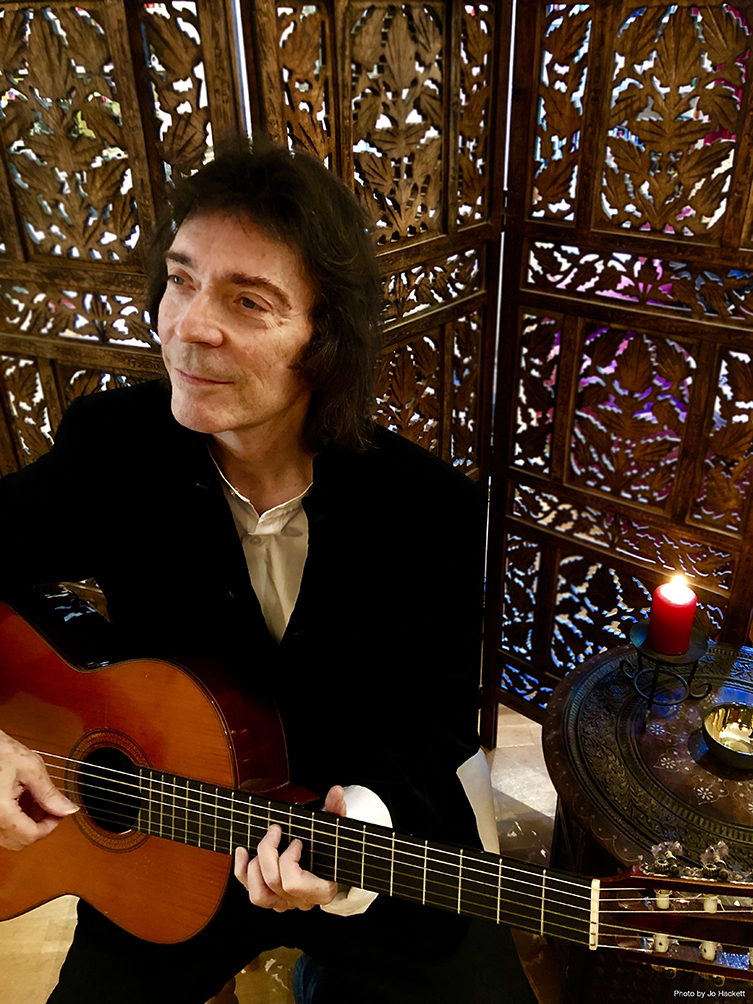
GG: Haha, yeah, nails and string tension.
SH: Yeah, okay! Well, I moved onto D’Addario Pro-Arte strings because they seemed to be much smoother. I was using Savarez first and I think because they are brighter strings, they’d probably be really good for flamenco stuff, but I wanted something gentler.
Now, nails. I keep them very short. I think that a lot of guitarists – in fact, I would say most guitarists – don’t have them that short, but I wanted that ‘plumbier’ sound that I heard Segovia getting and I know that he had old fashioned ribbon mics that were not placed near the guitar at all. So, you’ve got increased noise and hiss, but you’ve got sweetness. But goodness me, filing the nails is a whole arcane art, isn’t it? I’d heard two things: funnily enough, that Cliff Richard used to spend an hour on his hair every day back in the day, and then I heard that Paco De Lucia used to spend an hour on his nails every day! (laughs) Or at least before doing something professional! Of course, you put two and two together, you’d never get out of the house!
"Goodness me, filing the nails is a whole arcane art, isn’t it?"
But I do tend to do the nails every day. I find that if I don’t, they’re not very happy But, that’s just me. Theo, my friend, would do them the day beforehand, otherwise they would catch. He was the one who showed me about using a buffer, the thing that women usually use to polish up their nails before they put lacquer on them. I don’t use any lacquer, but I do use this buffer that smooths it, so as well as using a nail file, you’re using the three extra things: the rougher thing, then the slightly smoother thing with the white and then the other side of it, which in my case is grey. It’s a really old one but it does polish up the nails! You know, noticing that, Segovia had very short nails and I noticed he filed them differently at different times. In the 1960s, I think he had them filed to two points! Then I noticed later on, it was just rounded. I’ve experimented with both and I find being rounded helps me more. So, they are rounded, slightly to the right but only just slightly.
GG: Brilliant, thanks for such detail! Now, do I have time for one last question?
SH: Sure, absolutely, yeah.
GG: Thank you so much! Now this is touching back on something you mentioned at the beginning of our conversation today, and I’d love to pick up on it. Under a Mediterranean Sky sounds so blatantly romantic and I think as well of the word ‘adventure’: adventurous musically but it also has the spirit of adventure within it. Is that something you think has gone missing is a lot of current music?
SH: Well, I think so! I’ve noticed, even with ballads, people have lost the connection to Folk music, which used to serve up some of those very simple, sweet melodies. I find myself going back to School songs at times, being radically traditional. Here we go, that radical thing again. I don’t think there’s a sweeter song than Early One Morning: the perfect cadence of that, you know? The three chords. I very often come back to that, noticing that Bach would, at the end of something that would be very technically demanding, just have three chords at the end (hums a simple melody): this extra little tune!
The Beatles used it at the end of We Can Work It Out: this extra little tune. Lovely! The idea of a whole extra little tune: what a wonderful idea! So yeah, I think it can be quite radical. The more technique you possess, the more you write things, you tend to forget how powerful those early chords can be! Your tonic, your subdominant and your dominant. I’ve also started using the capo more as well, to give the guitar a certain sweetness. I know that most nail players, flamenco players, use a capo: I understand the reason why, but there’s also an area of sweetness that I think can creep in and it starts to sound a little more like the harp. You’re not looking for depth, you’re not looking for the thunder of the piano, and to go with the sweetness of the guitar, I think, can be very useful. So, there’s a few thoughts!

A few thoughts, indeed! Sharing his prized tips on tunings, nail shaping and much more, Steve has really been generous. All guitarists can benefit from taking heed of these glowing nuggets of insight, and applying them to their own playing. We thank Steve profusely for giving us so much, not to mention his time!
Under a Mediterranean Sky is out now on Insideout Music. Head over to the official Steve Hackett website to get your copy. It's an enchanting listen, and quite an essential one for right now! Whether it inspires you to grab a classical guitar and get practising, or just to pour yourself a cool drink and imagine the deep blue sea of the Med, this album will work it's magic on you!
Thank you again to Steve Hackett for his generosity. Thanks also to Sharon Chevin for setting us up and thanks, as always, to you for spending your time with us and reading this interview. We hope you've enjoyed it. It you have, please head across to our guitarguitar Interviews page to find more!
Ray McClelland
Click to Read our Previous Steve Hackett Interview


